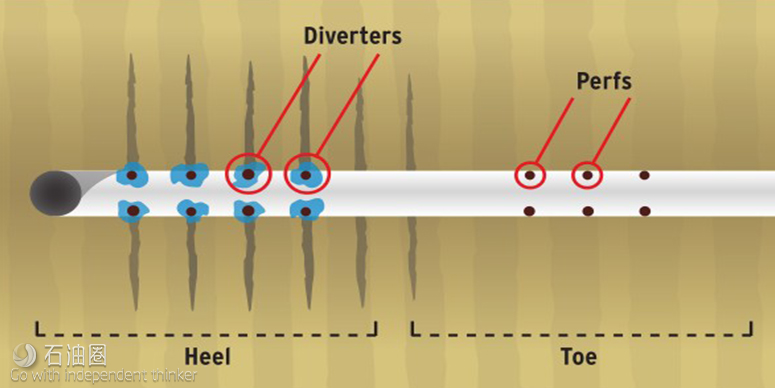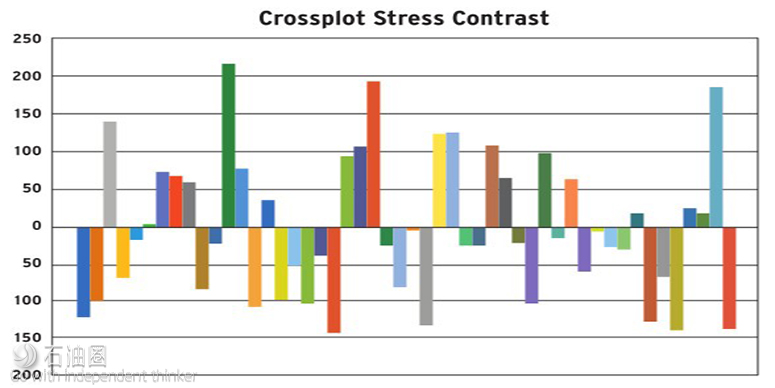Unsung Tools For Boosting Profitability Of Unconventional Wells
Amid new lows in permeability, biodegradable frac diverters lift production and lower completion costs.
The inimitable marriage of hydraulic fracturing and horizontal drilling has crossed an economically defining threshold as shale reservoirs approach what can best be described as “sub-unconventional,” which translates to permeability up to two magnitudes of order lower than the pre-2017 trend.
With the unconventional sector oriented to produce from reservoirs much tighter than those of earlier developed assets, the pressure to increase production and lower completion costs is magnified exponentially. Accordingly, as these ultratight pay zones respond largely to contact frequency, the onus is on operators to extend the frac stage length and/or enhance hydrocarbon flow within each stage, while reducing cycle time on location. The operative phrase here should be “effective stage length,” as longer stages and the frequency of fracture clusters therein can be counter-productive to maximum reservoir drainage unless flow uniformity is an integral consideration in the frac design.
For contemporary unconventional stage fracturing, it can be argued that biodegradable frac diverters have, somewhat unceremoniously, emerged as the single most effective tool for balancing higher reservoir productivity with lower completion costs and risks. Frac diverters effectively plug perforations and the near-wellbore heel clusters, where casing friction drives a disproportionate volume of frac fluid, while redirecting flow to mid-interval and outer toe fractures that intrinsically are less accepting of the proppant delivery medium (Figure 1). Moreover, biodegradable frac diverters help minimize friction and pressure-induced casing integrity issues.
Importantly, field data have proved that the engineered design and application of biodegradable frac diverters deliver across-the-lateral flow uniformity, generally boosting production rates from 18% to 40%, with corresponding increases in EURs, while reducing spread costs by more than 12% on average.
To put into proper context the emergent role of diverters in exploiting these contact-responsive rocks, a look at the current permeability landscape and corresponding fracture stage lengths is in order.
Permeability and stage length
Given the latest trend in unconventional targets, the U.S. shale community is once more redefining acceptable reservoir quality. The pay zones put onstream during the mercurial growth spurt of 2004 to 2009 were loosely characterized as “yesterday’s dry holes,” but more pointedly described source rocks that historically were dismissed as sub-par assets. North Texas’ gas-rich Barnett Shale is the first play to profitably complete and produce the source rock from vertical wells. Primarily driven by the need to avoid water, horizontal wells were later landed in the Barnett and staged-fractured with several completions along the lateral, yielding healthy economic returns in the process. With the Barnett as the petri dish, the unconventional horizontal completion process was refined elsewhere and, of course, evolved into oil reservoirs after the precipitous drop in gas prices.
The current trend—and one having a profound influence on reservoir stimulation response—is toward developing reservoirs with at least one and up to two orders of magnitude less permeability than the values recorded during the earlier growth explosion. The shallow migration of hydrocarbons into these extremely impermeable rocks fall into a category best described as “contact type” reservoirs, unlike the pay zones of 2004-2009 that relied on high degrees of conductivity and infrequent contact to maximize production. For those “conductivity-type” rocks, ceramic and other high-yield, but expensive, proppants were used consistently in shale completions. Owing to the trendy emphasis on contact and frequency, a less costly low- to moderately conductive proppant pack is sufficient to generate economic production rates. Most operators, in fact, disregard American Petroleum Institute’s guidelines that call for proppant best suited for the respective closure stress level, opting instead to stimulate with extremely close fracture spacing (3 m [10 ft] in many cases). For this discussion, 12 m (40 ft) will be used as a minimum spacing between clusters.
Precisely determining permeability is another matter altogether. Assessing permeability through conventional pressure transient methods is difficult and very time-consuming in these ultratight reservoirs. Ostensibly, visual estimates by the mud logger is a simpler approach but, at best, provides only order of magnitude approximations and cannot be quantified with any degree of confidence.
Alternatively, the Pixler method is among the most commonly used proxies to more precisely determine permeability. The Pixler method uses gas chromatographic readings to plot the mathematical relationship of C4 and C5 values (heavy gases) and total gas, which is occasionally referred to as the “wetness ratio.” It is important to understand that these values will remain more qualitative than quantitative until they are calibrated against other datasets, usually core data. However, the assumption that the high peaks of this ratio represents higher permeability generally holds true.
Close spacing leads to yet another opportunity to enhance project economics by first increasing the linear distance comprising a stage, followed by optimizing the frac fluid distribution within the spacing. For example, consider a starting point of four clusters per stage that is subsequently improved to six, eight or 10 clusters. The stage grows from three times, 12 m to 36 m (40 ft to 120 ft), to nine times, 12 m to 110 m (40 ft to 360 ft). Notably, the math can be a bit tricky when first building stages, as one must account for the first cluster at 0 m (0 ft), progressively increasing to 12 m, 24 m and finally reaching a stage length of 36 m with four clusters.
Above all, extending the stage length reduces the number of cycles that can stress and cause a failure to casing couplings, while also requiring fewer plugs. The savings in plug costs is clearly evident in the Delaware Basin, where price tags range from $3,900 to $6,900 per set. The wireline crew efficiency, the pumping company’s nonproductive time fees and the reduced risk of parted casing further augment the savings equation.
However, reducing time on location represents by far the single most influential cost-saving component. Consider the case of a mid-sized service company in the Delaware Basin, using a fixed-cost model where time on location and materials are priced separately. Under this pricing model, a 12-hour reduction in total on-location time would result in a roughly 12% spread cost reduction.
To fully capture the time-reduction benefits, the injection rate must be faster than that of the original design, which will speed up the process while not reducing the concentration of materials loaded into the fractures. Likewise, reducing cycle time minimizes the very real risks of parted casing, which increases each time a stage is pumped.
Casing integrity issues
One of the issues in lengthening frac stages is the level of pipe friction between the heel and toe clusters. The increase is a relatively linear relationship to length, meaning that doubling the stage length from 36 m to 110 m increases the friction threefold. For example, take the variations in pipe friction values in a 10-cluster frac stage, assuming all perforations are open. In this example, the differences between the toe cluster and the heel cluster range from a minimum of 41.4 psig up to 140.4 psig, depending on the pumping rate. These values may seem insignificant, but when added to the variation in closure stresses between cluster locations, they can contribute to project complexity and decrease the ability to open all of the perforations.
Figure 2 displays the actual contrast in minimum horizontal stress in a Third Bone Spring well, reflecting the wide difference in the maximum closure stress between perf clusters. The broad closure stresses, combined with pipe friction, dramatically alters interstage flow with increasing differential pressures.
Limited entry perforation, which has been used in the stimulation community since the late 1950s, has been seen as a viable methodology for addressing the differential pressure issues. Using limited-entry perforation, the heel in Figure 2 would have to be perforated using few and very small perforations, compared to the numerous and large perforations at the toe. This common practice, however, has lost some favor, largely because myriad issues surrounding the detection and mitigation of closure stress differences is not well appreciated but will emerge with time.
Integrating drilling data with neural networks can deliver a synthetic log, which yields the rock properties that can generate stresses along the wellbore. These stresses are used to select perforation spacing to better take advantage of “like” stresses, thus improving the perforation opening. Afterward, minimum pressure drops between perforations can be designed. This methodology also represents the foundation for the engineered application of biodegradable diverters to increase fracturing stage lengths while maintaining average cluster spacing similar to the original completion design.

 石油圈
石油圈


